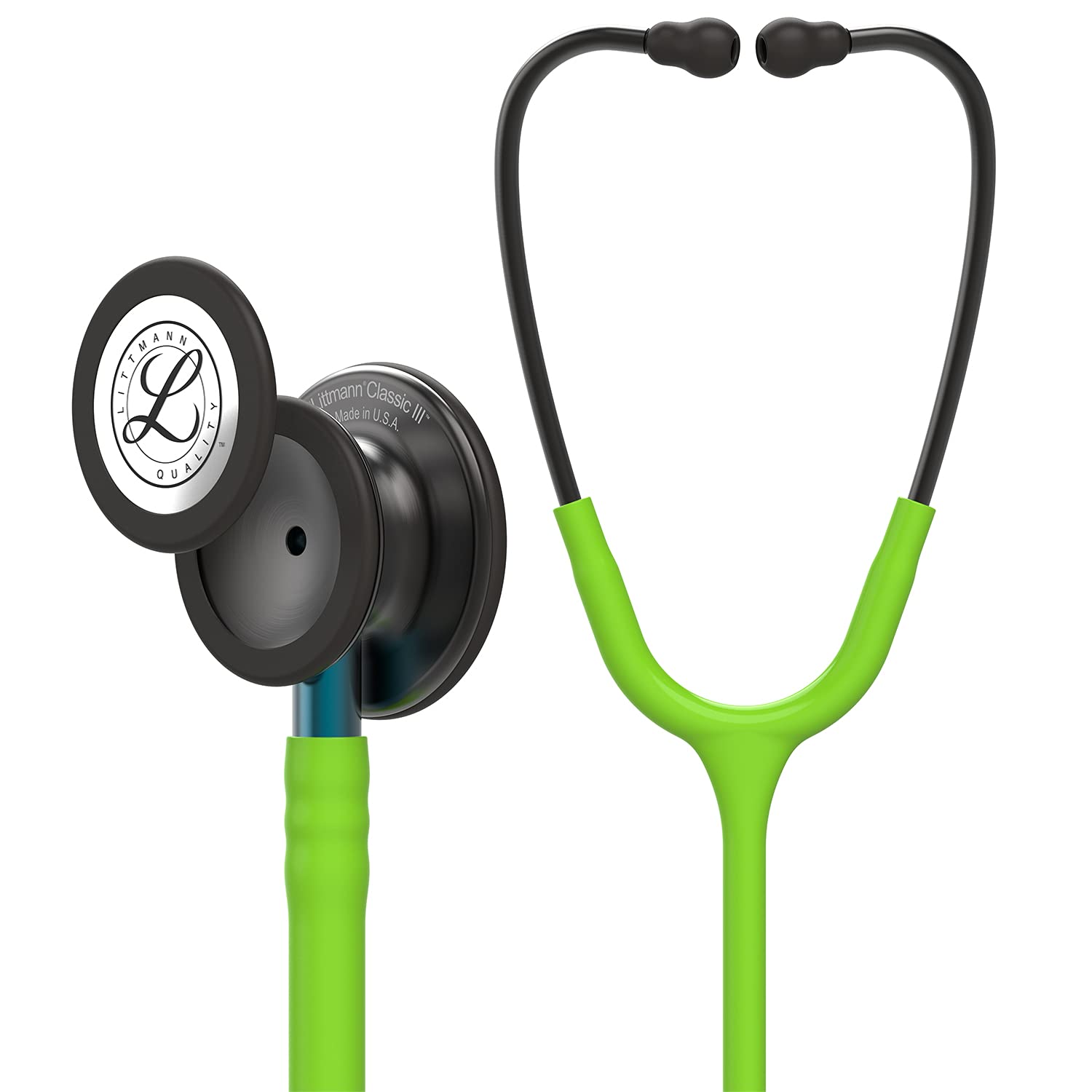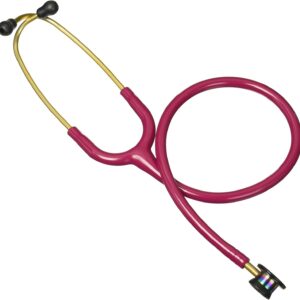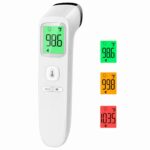Advancements of 3m™ Littmann® Cardiology Iv™ Diagnostic Stethoscope
Description
Advancements of 3m™ Littmann® Cardiology Iv™ Diagnostic Stethoscope: When assessing cardiac conditions, the healthcare sector places a premium on accurate and precise diagnostics. Because it allows them to hear the patient’s interior noises, stethoscopes are an essential instrument for auscultation. Of all the stethoscopes available, the 3MTM Littmann® Cardiology IVTM Diagnostic Stethoscope excels in detecting heart sounds.
In this part, we will analyse the Littmann Cardiology IVTM thoroughly, concentrating on its features, design elements, and clinical importance, to comprehend why it has grown to be such a trusted instrument for medical professionals. Let’s read below about “Advancements of 3m™ Littmann® Cardiology Iv™ Diagnostic Stethoscope”.
Historical Context:
The stethoscope has evolved greatly since its creation, which was spurred by a medical necessity. The first stethoscope was made by a French physician called René Laennec in the early 1800s using a rolled-up paper tube. Hey there, stethoscopes have really advanced. The development of specialised models capable of tackling a broad variety of therapeutic challenges has been made feasible by recent advances in both materials and design.
Importance of Cardiac Auscultation:
Listening to the heart’s sounds, often known as cardiac auscultation, is still an important part of a physical exam. This technique allows medical professionals to examine the heart’s valves and detect any rhythm abnormalities. These diagnostic evaluations are now far more precise and easy to see because to advancements in stethoscope technology.
Overview and Purpose:
Three years of study, development, and feedback from users went into making the 3MTM Littmann® Cardiology IVTM Diagnostic Stethoscope. Because of its unique design, it satisfies the needs of doctors, especially cardiologists and other experts who depend on accurate acoustic assessments to detect complex cardiac problems. The stethoscope’s superior clarity, versatility, and durability have propelled it to the status of industry standard.
Acoustic Excellence:
Its high-quality sound has made the Cardiology IVTM famous. The stethoscope can transmit sound with a finer degree of accuracy because of its state-of-the-art technology. The precision-machined chestpiece and adjustable diaphragms allow doctors to listen to both high- and low-frequency noises simultaneously. Not only that, dual-lumen tubing eliminates noise interference caused by friction.
Design Elements:
Dual-Lumen Tubing:
Differentiating itself from traditional stethoscopes, the Cardiology IVTM features a unique design with dual-lumen tubing. The configuration of the tubing enhances lifespan and decreases rubbing sounds, making it feasible to auscultate properly even in tough clinical conditions without disturbing patients.
Tunable Diaphragms:
Different auscultation choices are available on the adult and paediatric sides of the chestpiece, which are adjustable. Instead of inverting the chestpiece, physicians may use varying pressure levels to toggle between high- and low-frequency sounds. Even little variations in sound level can have a big impact on a diagnosis, making this capability invaluable during complex cardiac exams.
Precision-Machined Stainless Steel Chestpiece:
The chestpiece is built of high-quality stainless steel and is both sturdy and well-designed to provide the greatest acoustic performance. In addition to maintaining a tight seal for effective sound transmission, the ergonomically designed chestpiece guarantees the clinician’s comfort throughout extended usage.
Soft-Sealing Ear Tips:
With the Cardiology IVTM, your ears will be both comfy and soundproof thanks to the ear tips’ acoustic seal design. For accurate auscultating of the heart, this aids in sound transmission, which is crucial for preserving all of the delicate details. Additionally, it eases the healthcare provider’s discomfort.
Durability and Longevity:
An example of resiliency and durability, the Cardiology IVTM was designed to endure the rigours of regular clinical use. Made with durable tubing and a stainless-steel chestpiece, this stethoscope will serve you well for years to come. Because of its extended lifespan, the Cardiology IVTM is reliable and will keep performing as intended for doctors.
Enhanced Cardiac Assessment:
Providing doctors and nurses with the tools they need to make accurate diagnoses, the Cardiology IVTM is unparalleled in cardiac auscultation. Using the dual-lumen tubing and adjustable diaphragms, doctors may pick up on subtle heart sounds that can point to other issues. In cardiology, where early detection and correct diagnosis are of the utmost importance, this degree of specificity is particularly noteworthy.
Differentiating Heart Sounds:
Differentiating Between Them It might be difficult to detect valve issues, cardiac murmurs, or subtle shifts in heart rhythm. Modern acoustics and adjustable diaphragms in the Cardiology IVTM allow doctors to differentiate between these sounds with pinpoint accuracy. This feature allows for a more accurate diagnosis of various heart diseases, leading to better alternatives for therapy and management.
Pediatric Auscultation:
The Cardiology IVTM may be used with both adults and children thanks to its adjustable diaphragm on the paediatric side of the chestpiece. To make precise diagnosis and keep tabs on young patients in paediatric cardiology, the ability to detect both low- and high-frequency sounds is crucial.
Electronic Stethoscopes:
Traditional acoustic stethoscopes, such as the Cardiology IVTM, continue to have clinical sway, while electronic stethoscopes have emerged as a valuable supplement to them. The 3mTM Littmann® Cardiology IvTM Diagnostic Stethoscopes Have New and Improved Features Electronic stethoscopes enhance auscultation through the use of digital signal processing and amplification. These gadgets may also have Bluetooth, noise cancellation, and the ability to capture sounds.
Telemedicine Integration:
Stethoscope technology has advanced to allow remote patient examinations, thanks to the extensive use of telemedicine. Modern stethoscopes have Bluetooth connectivity, allowing doctors to send cardiac sounds for remote consultation in real-time. Traditional tools like as the Cardiology IVTM are still essential for direct patient care, even though electronic stethoscopes have revolutionised telemedicine.
Clinician Satisfaction:
Both consumers and critics have spoken highly about the Cardiology IVTM. Characteristics including ease of use, durability, and audible sound are highly prized by medical professionals. Accurate and rapid cardiac assessments are made possible by adjustable diaphragms and dual-lumen tubing, which have received much appreciation for this feature.
Long-Term Reliability:
Medical professionals may rely on the Cardiology IVTM for ongoing assistance. Its reliability and the trust that doctors have in it to deliver correct auscultation in every clinical situation are shown by reports of ongoing performance throughout many years of use.
Patient Experience:
We must not underestimate the influence of the Cardiology IVTM on the patient experience, even though its primary goal is to improve the physician experience. To ensure patient comfort during tests, the stethoscope should have characteristics such as soft-sealing ear tips. For patients to feel safe enough to open up and work together during diagnostic procedures, they must have a positive experience overall.
Limitations and Crucial Considerations:
Cost Considerations:
Like any high-end diagnostic tool, the Cardiology IVTM isn’t cheap. Healthcare institutions and individual practitioners should consider not just the cost, but also the features and advantages of the stethoscope. If pinpoint precision during cardiac auscultation is crucial, the expensive price could be justified by the high-tech acoustics and reliability over the long haul.
Evolving Technologies:
New stethoscope technologies with a plethora of extra features and functions may become accessible to doctors as technology progresses. Smart or electronic stethoscopes may be considered by healthcare practitioners for certain applications, including as telemedicine and connectivity to electronic health records. The Cardiology IVTM and other more conventional stethoscopes are not obsolete, though.
Conclusion:
One example of 3M’s commitment to providing superior cardiac auscultation tools is the Littmann® Cardiology IVTM Diagnostic Stethoscope. For precise evaluations of cardiac illness, healthcare experts depend on its cutting-edge design, durable construction, and advanced acoustics.
The Cardiology IVTM uses state-of-the-art technology alongside the stethoscope as a medical symbol to meet patients’ ever-changing medical needs. This trustworthy tool will continue to be crucial in the ongoing assessment and tracking of cardiac problems within the dynamic healthcare sector, since it is relied upon by specialists. I hope you like reading “Advancements of 3m™ Littmann® Cardiology Iv™ Diagnostic Stethoscope”.








Reviews
There are no reviews yet.